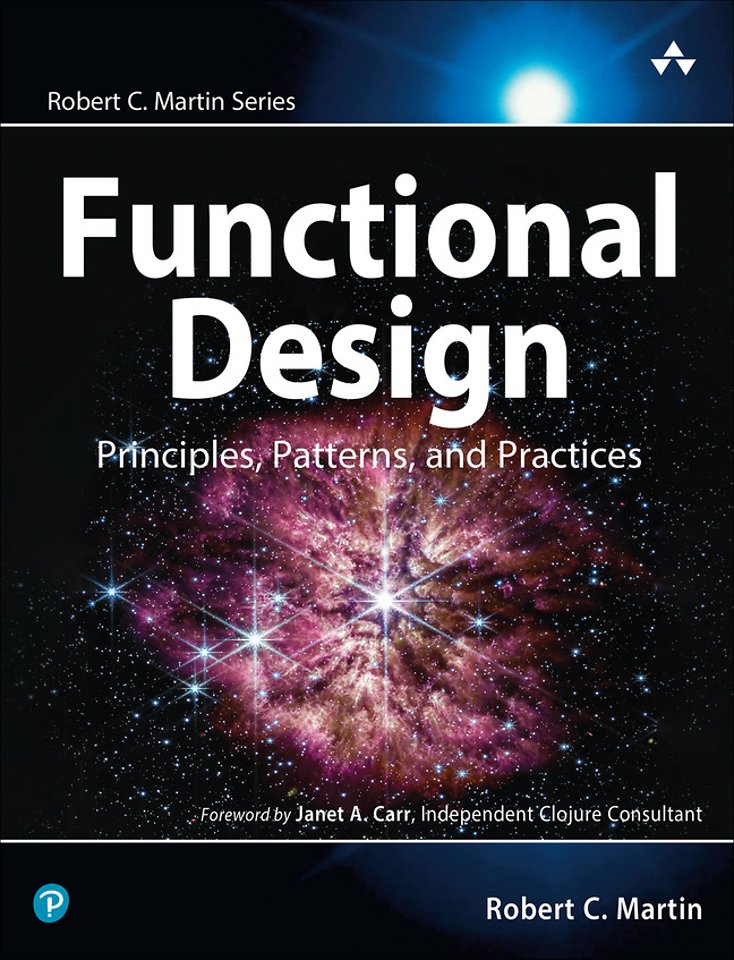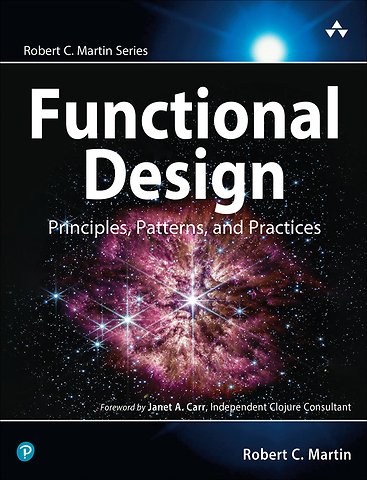Functional Design
Principles, Patterns, and Practices
Paperback Engels 2023 9780138176396Samenvatting
A Practical Guide to Better, Cleaner Code with Functional Programming
In Functional Design, renowned software engineer Robert C. Martin ("Uncle Bob") explains how and why to use functional programming to build better systems for real customers. Martin compares conventional object-oriented coding structures in Java to those enabled by functional languages, identifies the best roles for each, and shows how to build better systems by judiciously using them in context.
Martin's approach is pragmatic, minimizing theory in favor of "in the-trenches" problem-solving. Through accessible examples, working developers will discover how the easy-to-learn, semantically rich Clojure language can help them improve code cleanliness, design, discipline, and outcomes. Martin examines well-known SOLID principles and Gang of Four Design Patterns from a functional perspective, revealing why patterns remain extremely valuable to functional programmers, and how to use them to achieve superior results. Understand functional basics: immutability, persistent data, recursion, iteration, laziness, and statefulness Contrast functional and object approaches through expertly crafted case studies Explore functional design techniques for data flow Use classic SOLID principles to write better Clojure code Master pragmatic approaches to functional testing, GUIs, and concurrency Make the most of design patterns in functional environments Walk through building an enterprise-class Clojure application
"Functional Design exudes 'classic-on-arrival'. Bob pulls back the curtain to reveal how functional programming elements make software design simple yet pragmatic. He does so without alienating experienced object-oriented programmers coming from languages like C#, C++, or Java."
--Janet A. Carr, Independent Clojure Consultant
Register your book for convenient access to downloads, updates, and/or corrections as they become available. See inside book for details.
Specificaties
Lezersrecensies
Inhoudsopgave
Rubrieken
- advisering
- algemeen management
- coaching en trainen
- communicatie en media
- economie
- financieel management
- inkoop en logistiek
- internet en social media
- it-management / ict
- juridisch
- leiderschap
- marketing
- mens en maatschappij
- non-profit
- ondernemen
- organisatiekunde
- personal finance
- personeelsmanagement
- persoonlijke effectiviteit
- projectmanagement
- psychologie
- reclame en verkoop
- strategisch management
- verandermanagement
- werk en loopbaan

